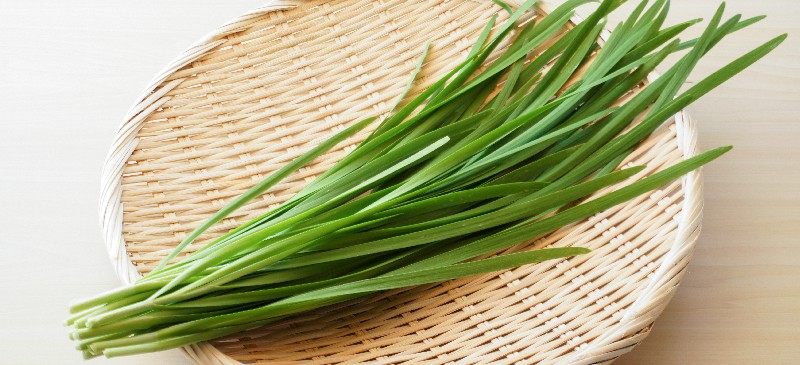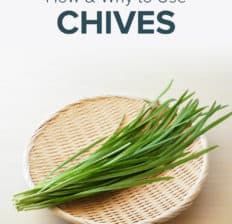This Dr. Axe content is medically reviewed or fact checked to ensure factually accurate information.
With strict editorial sourcing guidelines, we only link to academic research institutions, reputable media sites and, when research is available, medically peer-reviewed studies. Note that the numbers in parentheses (1, 2, etc.) are clickable links to these studies.
The information in our articles is NOT intended to replace a one-on-one relationship with a qualified health care professional and is not intended as medical advice.
This article is based on scientific evidence, written by experts and fact checked by our trained editorial staff. Note that the numbers in parentheses (1, 2, etc.) are clickable links to medically peer-reviewed studies.
Our team includes licensed nutritionists and dietitians, certified health education specialists, as well as certified strength and conditioning specialists, personal trainers and corrective exercise specialists. Our team aims to be not only thorough with its research, but also objective and unbiased.
The information in our articles is NOT intended to replace a one-on-one relationship with a qualified health care professional and is not intended as medical advice.
What Are Chives? How to Grow, Harvest & Use This Beneficial Vegetable
May 16, 2023

Although most people associate chives as a simple garnish for baked potatoes, egg dishes and salads, there are so many more potential benefits and uses of this versatile vegetable. In fact, like other veggies in the same family, they are packed with important nutrients and health-promoting compounds that have been shown to fight cancer cell growth, protect against chronic disease, boost immunity and more.
Are chives green onions? How do you eat fresh chives, and how can they impact your health?
Keep reading for an in-depth look at this vibrant veggie, including its nutritional profile, culinary uses and the main difference between scallions vs. chives.
What Are Chives?
According to Merriam Webster, the official chive definition is “a perennial plant (Allium schoenoprasum) related to the onion and having slender leaves used as a seasoning.”
Chives, also known as onion chives, are an edible species of plant that belong to the Allium genus. Leeks, shallots, garlic and chives are all also closely related and share a similar set of nutrients and health benefits.
This flavorful herb has been around for at least 5,000 years and cultivated since the Middle Ages. The chives meaning, or etymology of the word, can be traced to the Latin word “cepa,” which means onion.
They grow in large, grass-like clumps and have long, thin leaves with purple onion flowers, but they don’t contain the same underground bulb as other types of onions.
Keep in mind that there are several other plants that look similar but actually belong to a different species of plants and have minute differences in terms of taste and health benefits. Chinese chives or “garlic chives,” for example, are characterized by their unique garlic taste and the presence of fragrant white flowers and flat leaves. Green onions, or scallions, are also commonly confused with them.
What is the difference between chives and green onions?
The main difference between chives vs. green onion is in their respective flavors. Green onions have a strong, peppery taste while the chive is more mild.
Nutrition Facts
Although they’re typically consumed in small amounts, fresh chives still pack quite a punch when it comes to nutrition. When paired with a variety of other healthy foods, even just one tablespoon can help bump up your intake of vitamin K, vitamin C and vitamin A to help you meet your daily nutrient needs.
One tablespoon (about three grams) of raw chives contains approximately:
- 1 calorie
- 0.1 grams carbohydrates
- 0.1 grams protein
- 0.1 grams fiber
- 6.4 micrograms vitamin K (8 percent DV)
- 1.7 milligrams vitamin C (3 percent DV)
- 131 international units vitamin A (3 percent DV)
- 3.2 micrograms folate (1 percent DV)
- 0.1 milligrams manganese (1 percent DV)
Health Benefits
1. Boost Bone Strength
One of the top chives benefits comes from their vitamin K content. In addition to playing a central role in blood clotting, vitamin K is also important for keeping bones healthy and strong.
Because of its involvement in bone metabolism, some studies show that vitamin K may improve bone mineral density and reduce the risk of fractures.
For best results, be sure to pair chives with other vitamin K foods. Leafy greens, scallions, Brussels sprouts, cabbage, broccoli and cucumbers are all excellent sources of bone-building vitamin K.
2. Contain Cancer-Fighting Compounds
Like other veggies in the same family, chives are believed to possess potent cancer-fighting properties. In some cases, regular consumption of allium vegetables has even been tied to a reduced risk of certain types of cancer. For instance, one study in China found that eating more vegetables in the allium family was associated with a lower risk of stomach cancer.
The presence of organosulfur compounds found in chive seeds is thought to be responsible for the beneficial effects on cancer. One review published in Environmental Health Perspectives noted that these compounds can alter the effects of certain enzymes involved in detoxification to slow the growth and spread of cancer cells.
3. Reduce Inflammation
Although acute inflammation is a normal part of the immune response, sustaining high levels of inflammation long term can be incredibly harmful to your health. Some research suggests that inflammation may be at the root of disease and could contribute to the development of conditions like autoimmune disease, neurodegenerative disorders and cancer.
Not only are chives a great source of inflammation-busting antioxidants, but they are also rich in other compounds that can help reduce inflammation as well. One in vitro study out of Romania actually found that the leaves of the chive plant helped reduce oxidative stress and exhibited powerful anti-inflammatory properties as well, making it both an anti-inflammatory food and antioxidant food.
4. Aid in Disease Prevention
Promising research suggests that chives could aid in the prevention of chronic conditions, such as heart disease, cancer and diabetes.
According to a review published in Evidence-Based Complementary and Alternative Medicine, plants in the Allium genus are rich in “organosulfur compounds, quercetin, flavonoids, saponins and others, which have anticancer, preventive cardiovascular and heart diseases, anti-inflammation, antiobesity, antidiabetes, antioxidants, antimicrobial activity, neuroprotective and immunological effects.”
They also contain a good amount of vitamin C, an important water-soluble vitamin that doubles as a powerful antioxidant. Studies show that vitamin C protects the immune system, helps fight off infections, and has a therapeutic effect against many diseases and disorders.
While chives alone are unlikely to fulfill your daily vitamin C requirements, they can be combined with a variety of other fruits and veggies to boost your intake of this essential micronutrient.
5. Good Source of Choline
Chives are an excellent source of choline, an important nutrient that many of us don’t get enough of. Choline is involved in neurotransmitter synthesis, cell structure, metabolism and more.
It’s also thought to play a direct role in liver health, brain function and fetal development. That is why it’s absolutely essential to ensure you get enough in your daily diet.
Other good sources of choline include eggs, wild-caught salmon, quinoa, chicken, cauliflower and wheat germ.
Where to Find and How to Choose
Chives are widely available at most supermarkets and health food stores, typically in the produce section.
Be sure not to confuse them with scallions, or green onions. While green onions are often used as a substitute for chives, there are several notable differences between green onions vs. chives. Most notably, green onions have a stronger flavor with a slightly peppery taste while chives are a bit more mild.
Dried chives can also be used as a convenient, fresh chives substitute that you can keep in your kitchen pantry. They can usually be found in the seasoning section, often alongside other herbs and spices, such as basil, thyme and oregano.
Although both forms can be beneficial, some nutrients may be lost during the drying process, so it’s best to opt for fresh whenever possible to maximize the potential health benefits. Look for fresh chives with a vibrant and even green color, and steer clear of ones that are soft, dry or wilting.
How to Grow Chives (Plus Uses)
Growing chives in your own garden is a great way to take advantage of the multitude of benefits that the chives plant has to offer. There are plenty of options for how to grow chives, and they’re easy to harvest for beginner gardeners and green thumbs alike.
They should be planted in early spring in moist, rich soil that is well-draining. Unlike full shade plants like mint, the chive plant prefers direct sunlight.
If growing chives in pots, be sure to place them in a bright area where they can receive at least six to eight hours of sun per day. Although full-grown plants require very little care, they do need to be watered regularly throughout the growing season.
How do you harvest and store chives?
Chives can grow to be about 12–24 inches tall and can be harvested either before or after they’ve finished flowering. There are plenty of options for how to harvest chives, but the simplest method is to use a pair of scissors to snip at the base, just a few inches from the soil.
The chive flowers are also edible and can be harvested as well.
In the first year, you should harvest three to four times. In later years, you can switch to harvesting chives monthly.
Store them in a cool, dry place, and use fresh if possible to help preserve the distinct flavor and texture.
If you’re wondering, “What can I use chives for?” then you’re in luck. There are limitless ways to add them to your diet.
They work well as a garnish for soups, salads and potato dishes, and they can also be added to eggs, sandwiches and sauces, such as pesto, horseradish or sour cream.
Ideally, add raw chives to dishes after cooking to avoid subjecting them to too much heat, which can diminish their characteristic color and flavor.
Do chives go bad? Can you preserve chives?
Dried chives can last for several years but will eventually start to lose their potency over time. There are several options for how to dry chives, but the easiest method is by using an oven or food dehydrator.
Alternatively, try storing them in a paper bag or jar and placing them in a dry, cool location for a few weeks to dry them out naturally.
What can I do with leftover chives?
Freezing them is another good option for preserving leftovers. Simply add chopped chives to an ice cube tray and cover with a bit of water or olive oil before freezing until solid. Because this method does alter the texture a bit, it’s best to use thawed chives in dishes like soups and sauces.
Recipes
You may be asking yourself: What do I do with fresh chives? From potatoes to pesto to sandwiches and salads, the potential chive food options out there are nearly endless.
Here are a few delicious recipes that you can start experimenting with to enjoy this nutritious veggie:
- Goat Cheese & Artichoke Dip
- Compound Garlic Chive Butter
- Sweet Potato Hash Brown Casserole
- Creamy Chive Keto Blue Cheese Dressing
- Hasselback Potatoes
Risks and Side Effects
Like with all produce, it’s important to practice proper food safety when handling chives. Be sure to select ones with an even color to ensure freshness.
How do you know if chives are bad?
Avoid any that are soft, wilting or have an uneven, dull color.
Additionally, make sure you clean them thoroughly before adding to any dishes.
How do you wash chives?
Once you’re ready to use them, run them under cool running water, and remove any wilted stems.
Some people may have an allergy to this veggie, which can cause symptoms like itching, rashes or swelling. People with an allergy to other plants in the same family, like garlic or onions, are more likely to have a chive reaction. If you notice any adverse symptoms, discontinue use immediately, and consult with your doctor.
Final Thoughts
- What is a chive? It is a type of edible plant that is closely related to other species like garlic and onions.
- Are chives and green onions the same? Although the two are often used interchangeably, there are several differences between chives vs. green onions. The main distinction between green onion vs. chives is the flavor. The chive is more mild while green onion has a strong, peppery taste.
- Are chives good for you? In addition to packing in plenty of vitamin K, vitamin C and vitamin A, they are also rich in antioxidants and may help reduce inflammation, boost bone strength, fight cancer cells and protect against chronic disease.
- You can find them at most supermarkets in dried or fresh form, usually in the produce section or alongside other herbs and spices.
- Alternatively, you can also try growing your own at home and adding them to your favorite dishes to enjoy the health benefits that this incredible ingredient has to offer.





